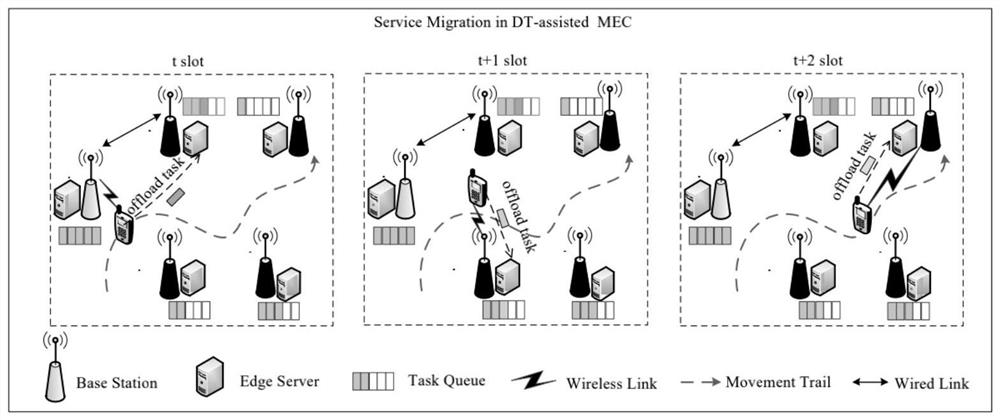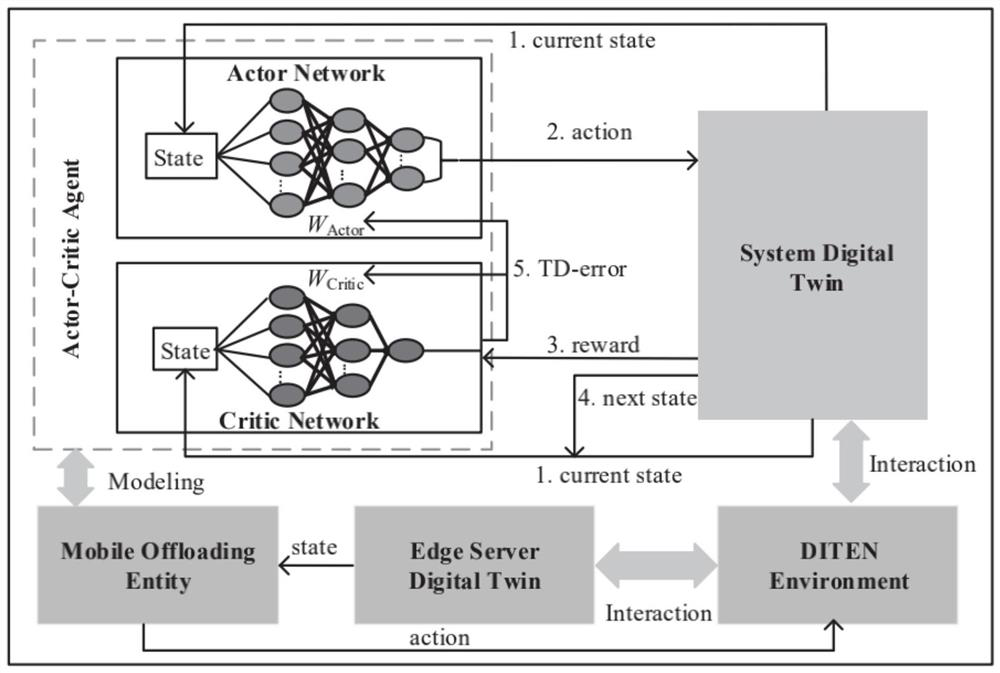A method to reduce network task offload delay in 6G digital twin edge computing
An edge computing and edge server technology, applied in the direction of network traffic/resource management, wireless communication, transmission system, etc., to achieve the effect of reducing offload delay, reliable offload decision sequence, and low system cost
- Summary
- Abstract
- Description
- Claims
- Application Information
AI Technical Summary
Problems solved by technology
Method used
Image
Examples
Embodiment Construction
[0083] The specific implementation steps of the present invention are as follows:
[0084] Step 1, establish a digital twin edge calculation model in 6G
[0085] like figure 1 The architecture is composed of a digital twin edge calculation network (DITEN) in the future 6G wireless cellular network scene consisting of a physical solid layer and a DT layer. In the physical solid layer, the edge server is deployed on the base station (BSS) as a small-scale computing unit to provide a computing service for the mobile device (MDS). The edge server in the scene is represented as a collection Connect to the MDS of the Edge Server over the BSS coverage, the computing task is uninstalled to an edge server with a specific requirement during the movement. In the DT layer, the DTS of the object in MEC constitutes the basic function of the physical entity layer to help the entire service process achieve more efficient decisions. The present invention considers two types of DTS, ie the DTS of ...
PUM
 Login to View More
Login to View More Abstract
Description
Claims
Application Information
 Login to View More
Login to View More - R&D
- Intellectual Property
- Life Sciences
- Materials
- Tech Scout
- Unparalleled Data Quality
- Higher Quality Content
- 60% Fewer Hallucinations
Browse by: Latest US Patents, China's latest patents, Technical Efficacy Thesaurus, Application Domain, Technology Topic, Popular Technical Reports.
© 2025 PatSnap. All rights reserved.Legal|Privacy policy|Modern Slavery Act Transparency Statement|Sitemap|About US| Contact US: help@patsnap.com



